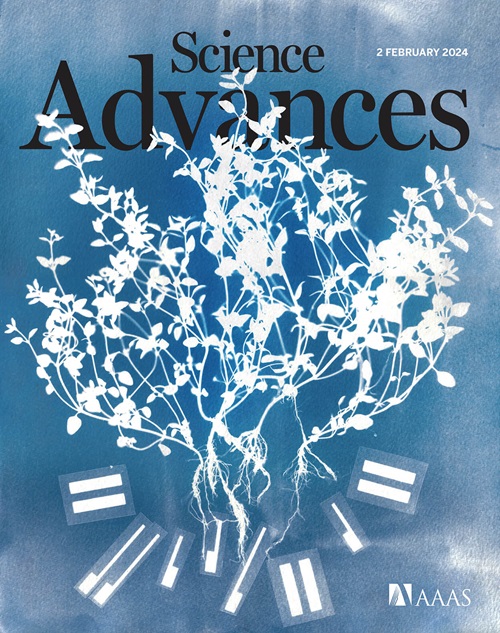角质层蛋白通过产生诱骗环状RNA介导蜘蛛螨抗逆性的进化
IF 11.7
1区 综合性期刊
Q1 MULTIDISCIPLINARY SCIENCES
引用次数: 0
摘要
包括朱砂叶螨(Tetranychus cinnabarinus)在内的植食性螨是一种节肢动物,以其广泛侵染寄主植物和抗农药而闻名。研究发现,抗甲氰菊酯雌螨(n- fer,目标抗性:F1538I kdr突变)对各种胁迫条件的适应性显著增强,包括暴露于不同的杀螨剂和高温(34°C)和低湿环境(40%相对湿度)。这种进化归因于抗性雌螨的角质层增厚。角质层蛋白CPR25是介导角质层增厚的关键基因。CPR25通过产生一种名为circCPR25的环状RNA来调节自身的过表达,circCPR25作为诱饵选择性地隔离和结合miR-34~317簇。本研究揭示了蜘蛛螨抗逆性进化的独特机制。具体来说,蜘蛛螨的角质层蛋白通过产生诱骗环状rna来调节自身的过表达,从而促进角质层增厚,促进对不利条件的快速适应。本文章由计算机程序翻译,如有差异,请以英文原文为准。
Cuticle protein mediates the evolution of stress resistance by generating a decoy circular RNA in spider mite
Phytophagous mites, including Tetranychus cinnabarinus, are arthropods known for their wide infestation of host plants and pesticide resistance. We found that fenpropathrin-resistant female mites (YN-FeR, with target resistance: F1538I kdr mutation) exhibited significantly enhanced adaptability to various stress conditions, including exposure to different acaricides and high-temperature (34°C) and low-humidity environments (40% relative humidity). This evolution was attributed to cuticle thickening in resistant female mites. Cuticle protein CPR25 was identified as a critical gene mediating cuticle thickening. CPR25 regulated its own overexpression by producing a circular RNA, named circCPR25, which acted as a decoy to selectively sequester and bind to the miR-34~317 cluster. This study revealed a distinctive mechanism underlying the evolution of stress resistance in spider mites. Specifically, a cuticle protein in spider mites regulates its own overexpression by producing a decoy circRNA, thereby promoting cuticle thickening and facilitating rapid adaptation to adverse conditions.
求助全文
通过发布文献求助,成功后即可免费获取论文全文。
去求助
来源期刊

Science Advances
综合性期刊-综合性期刊
CiteScore
21.40
自引率
1.50%
发文量
1937
审稿时长
29 weeks
期刊介绍:
Science Advances, an open-access journal by AAAS, publishes impactful research in diverse scientific areas. It aims for fair, fast, and expert peer review, providing freely accessible research to readers. Led by distinguished scientists, the journal supports AAAS's mission by extending Science magazine's capacity to identify and promote significant advances. Evolving digital publishing technologies play a crucial role in advancing AAAS's global mission for science communication and benefitting humankind.
 求助内容:
求助内容: 应助结果提醒方式:
应助结果提醒方式:


